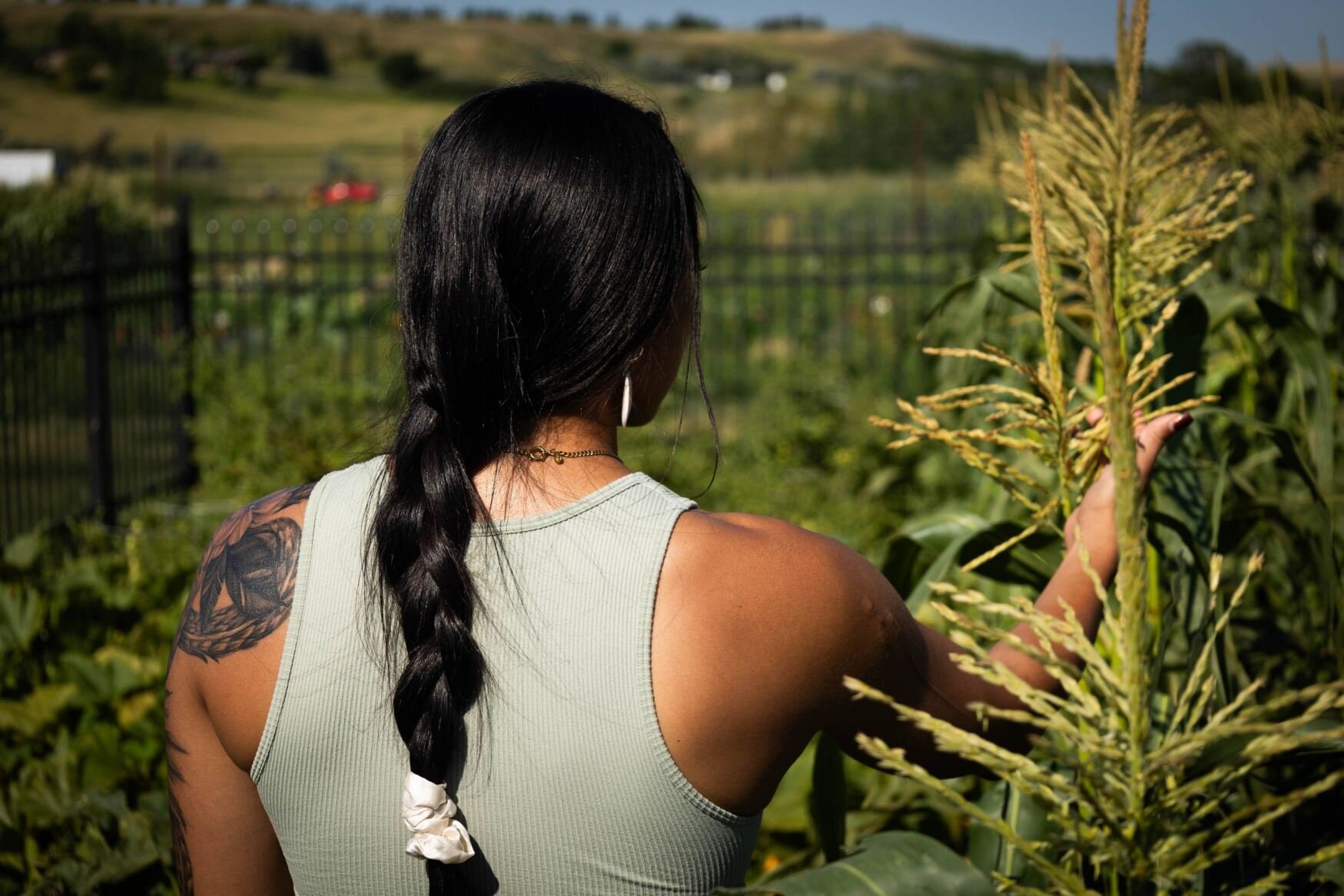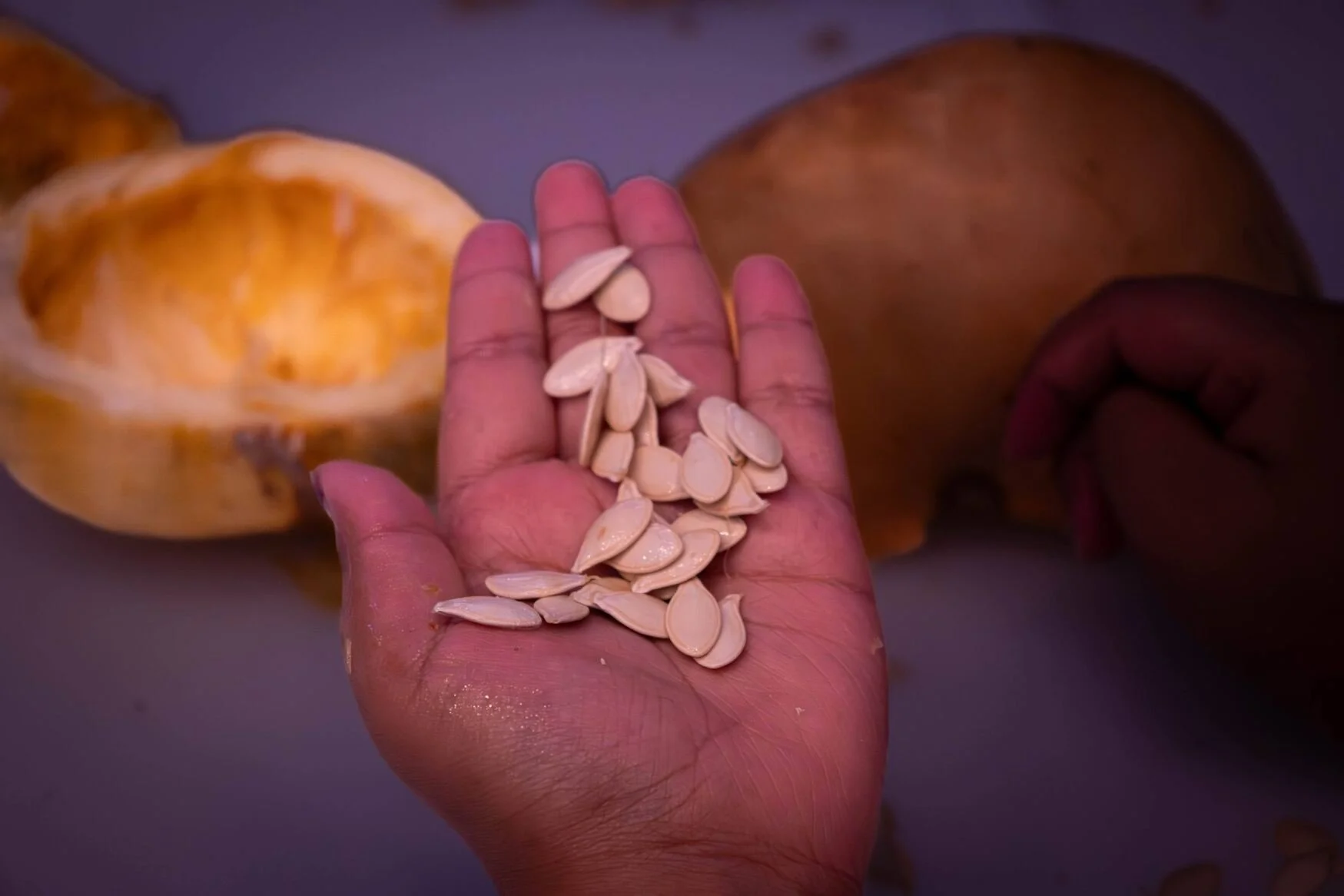
Nourishing Communities: The Future of Agriculture and Food Sovereignty
Beneath American Indian Hall on the Montana State University campus rests the living Ancestral Seed Bank, a library of agricultural knowledge tended to by students. It houses heritage seeds of corn, beans, native grasses, and many other varieties of seeds. Each spring, MSU’s Montana Indigenous Food Sovereignty Initiative (MIFSI) packages hundreds of seed bundles to share with Indigenous farmers and families across the state.
Dr. Jennifer Santry, of Choctaw, Sicangu Lakota, Mdewakanton Dakota, and Yankton Dakota heritage, currently teaches the Native Food Systems course at MSU. Regarding the term food sovereignty, Dr. Santry says, “It’s very specific to person and place in the community, so that definition varies.” She also emphasizes the importance of knowing our history and, in light of that history, what foods are culturally appropriate for a given community.
MIFSI is a non-profit organization promoting Indigenous food sovereignty through local and regenerative food systems and is a part of the Buffalo Nations Food Systems Initiative (BNFSI) at MSU. The two Indigenous-led, intertribal initiatives work to build capacity and credentials for Indigenous food professionals, blending their knowledge and agricultural science.
On March 6th, 2024, I arrive at American Indian Hall for a seed-packing dinner hosted by the initiatives. Large bags of seeds, courtesy of the living seed bank, sit waiting at circular tables, along with hundreds of yellow envelopes ready to be labeled, packaged, and sent to Indigenous farmers throughout the state.
“The term bank is commonly associated with objects, but for us, it’s very much a living reflection of how we adapt to our land,” says BNFSI Communications Manager Merritt Davis, who is of Muscogee Creek heritage. “We use the living seed bank for purposes of rematriation, and there is a lot of beautiful work that goes into connecting students and sharing the seeds across the biocultural region to return them to their homes.” Rematriation refers to an Indigenous, women-led movement centered around restoring relationships to the land.
One historical legacy of this effort was the Buffalo Treaty, established in 1825 on the Yellowstone River, in what Davis describes as “lifting the pipe.” It was revitalized in 2014 at the Blackfeet Reservation. Fostering a renewed connection between bison and Indigenous peoples, the Treaty hopes to restore bison herds to some semblance of their former glory. A full explanation of the treaty’s intertribal collaborative efforts can be found online at www.buffalotreaty.com.
After a smudging of sweetgrass, we share bison stew made with local vegetables, bread, and serviceberries. Then, an assembly line begins—every person assists either with scooping and measuring seeds, labeling the packets, or sealing them. I speak with classmates, see new faces from the community, and feel a sense of comradery as we all work toward the same goal. We talk about school, agriculture, and the future of Indigeneity, as I contentedly scoop bean seeds into their respective bundles.
“The biggest thing is that we have an Indigenous-led elders council, which includes elders and knowledge keepers from across this biocultural region,” says Davis, who emphasizes the importance of strong, educated Indigenous leadership, as well as the inclusion of youth. “And we are working very hard to return their voices and their guidance to the center and leading in terms of what we’re doing to build capacity and educate the next generation.”
Food sovereignty practices have always been present in Montana’s Indigenous agriculture. These methods transcend borders and empower communities by nourishing the soul as much as the body. We can do our part by supporting Indigenous-led programs and businesses, volunteering, learning about local plants, and spreading awareness. Together, let us imagine a world where food is not merely a commodity, but a source of solidarity and of cultural liberation.
Nourishing Communities: The Future of Agriculture and Food Sovereignty
Story by Julian Soucy
Photos courtesy of Merritt Davis
Food sovereignty honors the right of individuals and communities to determine what they eat and how their food is produced. This holistic framework prioritizes local knowledge, biodiversity, and democratic decision-making processes over profit-driven agendas.

